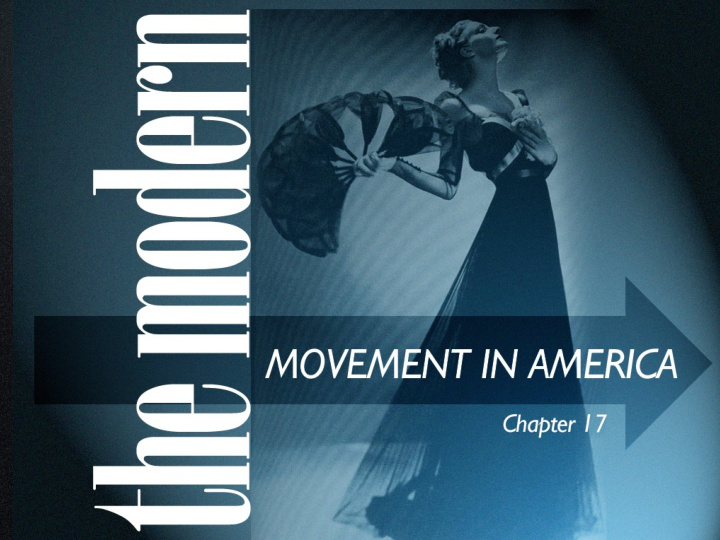



American Graphic Design in the 1920s-30s was dominated by traditional illustration and pictorial modernism . Coles Phillips, WWI US poster, 1918
American advertisers relied on traditional illustrations. Joseph Leyendecker, Arrow Shirts advertisement, 1920
American magazines often used designs of pictorial modernism . Coles Phillips, Life magazine cover, 1927
Armory Show Modern Art wasn’t received warmly by the public when its Joseph Leyendecker first major 1918 exhibition debuted in New York in 1913.
Armory Show Marcell Duchamp’s abstract work of cubism-futurism was derided by a NY Times art critic for looking like “an explosion in a shingle factory.” Marcel Duchamp Nude Descending a Staircase, No. 2 , 1912
American modernism By the 1930s, book design, editorial design and corporate graphics revealed modernistic influences. William Addison Dwiggins The Power of Print and Men , 1936
American modernism Dwiggins was an American book designer and type designer who used cubistic collages and subtle color. William Addison Dwiggins The Power of Print and Men , 1936
Dwiggins was the first to use the term “Graphic Designer” to describe his work encompassing books, prints, and advertising. William Addison Dwiggins The Power of Print and Men , 1936
Lester Beall He was born in Kansas City, Mo., and studied art in Chicago where he started his graphic design career. He broke with the American traditions in advertising layout by using Tschichold’s new typography and the Dada movement’s random organization style. Lester Beall, Book cover for PM , 1937
Lester Beall By 1935, Beall moved to rural New York to set up an office and home. There, he produced a series of posters for the Rural Electrification Administration to reach illiterate and semi-literate audiences. Lester Beall, Rural Electrification Administration , c. 1937
Lester Beall His adaptation of modern art principles became a major influence in the government’s outreach program. Lester Beall, Rural Electrification Administration , c. 1937
Herbert Bayer, World Geo-Graphic Atlas, 1953 Immigrants come to America Gradually, European artists, scientists and authors immigrated to America. By the late 1930s, Nazi fascism drove an onslaught of European talent to America.
Erté , Dr. Mehemed Fehmy Alexey Brodovich , Alexander Liberman , Harper’s Bazaar , 1931 Agha , Harper’s Bazaar, Vogue , Vogue, Vogue, Vanity Fair, 1935 1941 Home and Garden 1934 Four who brought modernism to America They were Russian-born, educated in France and worked in editorial design for fashion magazines.
Erté (Romain de Tirtoff) A prominent art deco illustrator and set designer from Paris, Erté joined Harper’s Bazaar designing fashion illustrations and covers in a stylized synthetic cubism , exotic decorativeness and elegance for high fashion. Erté , Harper’s Bazaar , 1923
Dr. Mehemed Fehmy Agha He met publisher Condé Nast in 1928 working as a designer for Berlin’s Vogue and came to the U.S. to completely revamp the dated American version into a masterwork of modern design. Dr. Mehemed Fehmy Agha , Vanity Fair, 1935
Alexey Brodovitch , Vanity Fair , 1935 Alexey Brodovitch Became art director for Harper’s Bazaar in 1934. He remade editorial design with experimental use of type, white space and commissioned art from major European artists, such as Man Ray, A.M. Cassandre and Salvador Dali.
Alexander Liberman Succeeded Agha as Vogue magazine’s art director in 1943 with an emphasis on experimental fashion photography. Alexander Liberman , Vogue , 1944
America embraces modernism At the New York World’s Fair — on the brink of WWII — America cast aside its neutrality and provincialism in a show of modernism, technology and global power. Joseph Binder, New York World’s Fair poster, 1939
Jean Carlu, America in World War II U.S. Office of Emergency Illustrators and designers, many of them recent Management poster, immigrants from Europe, were commissioned to 1941 create posters for the war effort.
Walter Paepcke and the Container Corporation of America This American industrialist founded the Container Corporation of America (CCA) and became a “patron of design” by using design for business and cultural sponsorship. Jean Carlu, c. 1942
Walter Paepcke and the Container Corporation of America This American industrialist founded the Container Corporation of America (CCA) and became a “patron of design” by using design for business and cultural sponsorship. Herbert Matter, c. 1942
Walter Paepcke and the Container Corporation of America This American industrialist founded the Container Corporation of America (CCA) and became a “patron of design” by using design for business and cultural sponsorship. A.M. Cassandre, c. 1942
Walter Paepcke and the Container Corporation of America This American industrialist founded the Container Corporation of America (CCA) and became a “patron of design” by using design for business and cultural sponsorship. Herbert Bayer, c. 1942
Container Corporation of America After the war, American artists were commissioned to interpret their native states and given complete artistic freedom for these corporate advertisements. Ben Cunningham, c. 1949
Informational and scientific graphics Catalog designer Ladislav Sutner developed a system for structuring information in a logical and consistent manner by establishing function, flow and form. Ladislav Sutner, c. 1950
Informational and scientific graphics Catalog designer Ladislav Sutner developed a system for structuring information in a logical and consistent manner by establishing function, flow and form. Ladislav Sutner, c. 1950
Informational and scientific graphics Herbert Bayer designed a World Atlas of scientific knowledge, more readily understood through graphic design.
Informational and scientific graphics Catalog designer Ladislav Sutner developed a system for structuring information in a logical and consistent manner by establishing function, Informational and scientific graphics flow and form. Scale relationships are explained visually in this solar system layout.
The great age of posters https://www.lynda.com/Graphic-Design-tutorials/great-age-posters/ 166781/363069-4.html?autoplay=true American Magazine https://www.lynda.com/Graphic-Design-tutorials/American-magazine/ 166781/363070-4.html?autoplay=true American Modernism https://www.lynda.com/Graphic-Design-tutorials/American-modernism/ 166781/363071-4.html?autoplay=true Megg's Ch 17 https://www.youtube.com/watch? v=kbAcEANi1wc&list=PLxPtyllY6Cx_Xar71rcNFqX2bDB7Wzfll&index=16

Recommend
More recommend